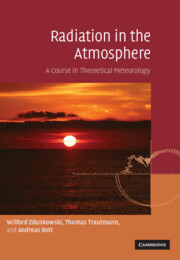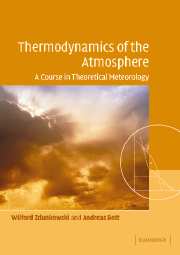Dynamics of the Atmosphere
Complete with numerous exercise sets and solutions, this work is written for advanced students of meteorology and related sciences as well as professional meteorologists and researchers. The first part of the book presents the mathematical tools needed for a thorough understanding of the topics covered in the second. These topics include kinematics of the atmosphere; inertial and dynamic stability; turbulent systems; and novel weather prediction methods with potential for extending the forecasting range.
- All equations are derived in great detail making it easy for the student to follow the mathematical developments
- Contains numerous student exercises for which solutions are provided
- Includes a discussion of novel methods of weather prediction which have potential for extending the forecasting range as computers become increasingly powerful
Reviews & endorsements
"[Zdunkowsko and Bott] pull together all the components needed for understanding global meteorology, presenting them in a thorough and precise manner... Recommended." Choice
Product details
April 2003Paperback
9780521006668
738 pages
248 × 176 × 36 mm
1.475kg
188 b/w illus. 4 tables 161 exercises
Available
Table of Contents
- Preface
- M1. Algebra of vectors
- M2. Vector functions
- M3. Differential relations
- M4. Coordinate transformations
- M5. The method of covariant differentiation
- M6. Integral operations
- M7. Introduction to the concepts of nonlinear dynamics
- 1. The laws of atmospheric motion
- 2. Scale analysis
- 3. The material and the local description of flow
- 4. Atmospheric flow fields
- 5. The Navier-Stokes stress tensor
- 6. The Helmholtz theorem
- 7. Kinematics of two-dimensional flow
- 8. Natural coordinates
- 9. Boundary surfaces and boundary conditions
- 10. Circulation and vorticity theorems
- 11. Turbulent systems
- 12. An excursion into the spectral turbulence theory
- 13. The atmospheric boundary-layer
- 14. Wave motion in the atmosphere
- 15. The barotropic model
- 16. Rossby waves
- 17. Inertial and dynamic stability
- 18. The equation of motion in general coordinate systems
- 19. The geographical coordinate system
- 20. The stereographic coordinate system
- 21. Orography-following coordinate systems
- 22. The stereographic system with a generalised vertical coordinate
- 23. A quasi-geostrophic baroclinic model
- 24. A two-level prognostic model: baroclinic instability
- 25. An excursion into numerical procedures
- 26. Modeling of atmospheric flow by spectral techniques
- 27. Predictability
- Answers to problems
- List of commonly used symbols
- References
- Index.








